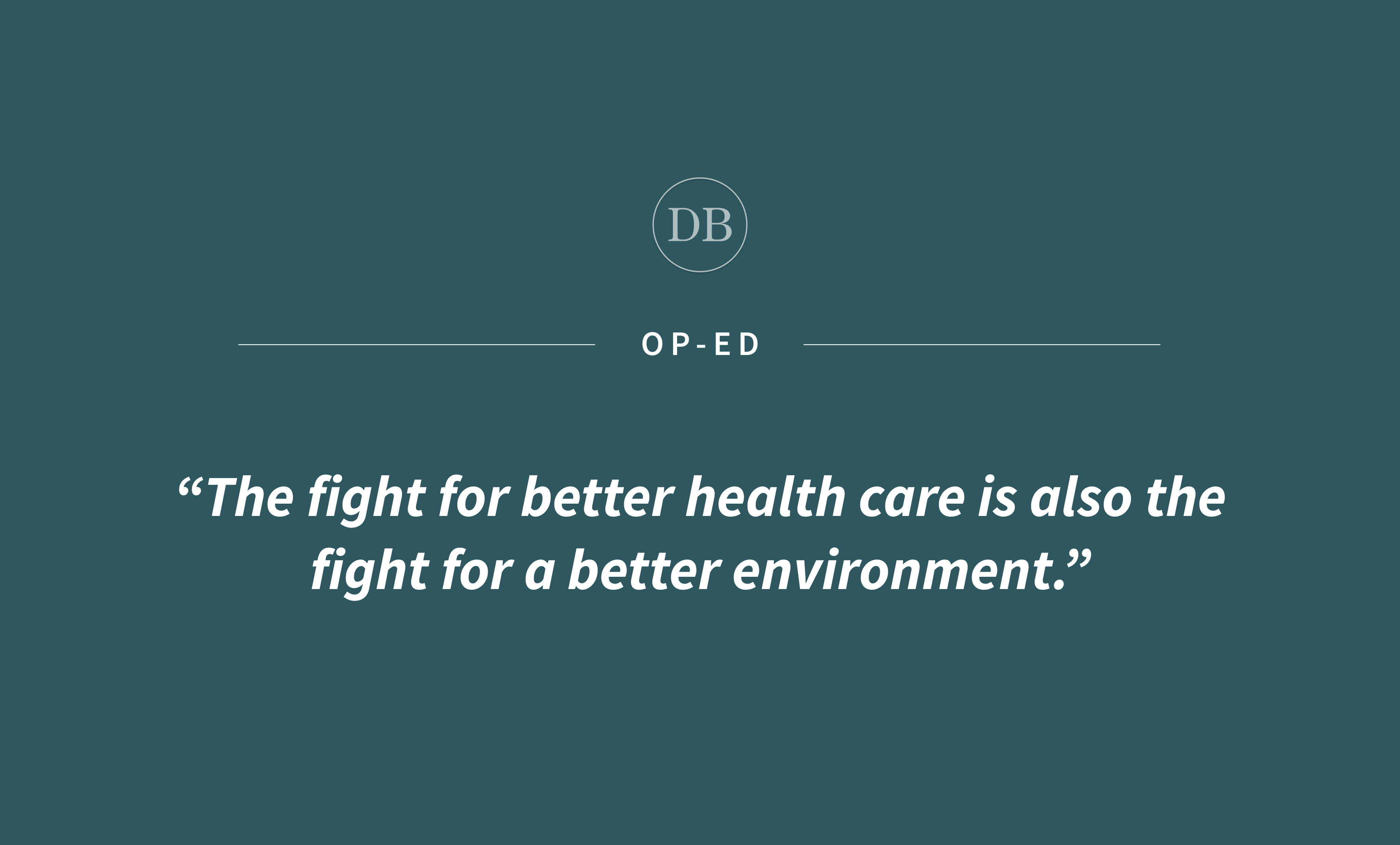Op-ed: Health care sector requires better environmental approach amid climate crisis

By Apurva Chaturvedi
April 3, 2022 8:45 p.m.
“I should recycle this.”
This is a recurring thought I have when cleaning the patient rooms in the clinic I joined this year. It doesn’t have a recycling system, which means the recyclable boxes I collect become trash. It always bothers me. Even the supervisors feel bad, but they can’t do anything because of health care protocols.
This experience shines a light on an aspect of health care that we don’t see: the environment. As a pre-med student, like hundreds of others at UCLA, I believe it’s important for us to realize that health care isn’t separate from the planet – the two are interconnected. Given the course of this pandemic and the shortage of health care professionals, we need to reevaluate the role of the medical field in our local communities.
The first issue is waste. The health care sector produces 5 million tons of waste per year and contributes to about 4.4% of greenhouse gas emissions, according to the Association of American Medical Colleges. Throughout the COVID-19 pandemic, the expansion of hospitals has contributed to more waste. Think about how many used masks you see in the trash or lying on the street. It doesn’t help that some clinics, such as the one I work at, don’t have recycling options.
Health care waste is only the beginning. With more extreme weather, hospitals will see an increase in environmentally related illnesses. The 2018 Special Report by the Intergovernmental Panel on Climate Change said it “will lead to greater risks of injuries, disease and death, owing to more intense heatwaves and fires, increased risks of undernutrition, and consequences of reduced labour productivity in vulnerable populations.” Instead of having a reactionary method to solving health care issues, in which doctors prescribe an antibiotic to fight sickness, we should consider the causes of sickness. We must evaluate the environmental causes, such as poor air quality or lack of food, before we start prescribing medications. If we can find an environmental problem and mitigate it, then we can prevent future illnesses from occurring.
Even if we find environmental causes, access to health care is difficult because of environmental inequities. Many minority communities live in areas that are more exposed to sources of pollution and hazardous chemicals, such as dumps, oil rigs and nuclear plants. These inequities harm people daily. Just imagine one day you are at school playing during recess and suddenly you are doused in fuel. Unfortunately, children experienced this in six elementary schools located just north of Compton in early 2020 when a Delta airplane dumped jet fuel on them. One of these schools was Park Avenue Elementary in Cudahy, California, whose student body is 97% Hispanic/Latino and has a 99% minority student enrollment. Can you imagine what health consequences these children have experienced?
Outside of the United States, many countries in the Global South are also experiencing environmental and economic inequities. These areas have a lack of access to nutrition, poor water quality as well as heat exposure because of risks such as water stress, extreme heat waves and crop yield change, as reported by the IPCC. These factors combined will cause more illness and deaths. According to the IPCC’s 2018 report, some residents in these areas make less than $10 a day – barely enough for a meal in Los Angeles. It’s clear that environmental and economic disparities are correlated with the health care issues that will worsen with climate change.
So, what can we do as the future of health care?
First and foremost, we should consider where we throw away our trash. UCLA’s goal of zero waste, which means the university diverts at least 95% of its waste from the landfill, by 2020 was not reached. And it needs to be done fast. Now the plan is to reach a 90% waste diversion rate by 2025, which seems lackluster since the closest we’ve reached is a rate of 80% back in the fiscal year 2011-2012. That was 10 years ago. In fact, the rate has decreased, which is not the direction we want as a university. Last year, the rate was 53%. Perhaps you could consider joining a sustainability club on campus to get us closer to UCLA’s goal. The UCLA Sustainability website has a list of clubs that you can join.
In terms of large-scale solutions, consider promoting social activism in your work as future health care professionals. One way is by advocating for women’s reproductive health services, whether it is by attending protests or joining clubs on campus. For instance, Project Drawdown, an organization dedicated to finding climate change solutions, advocating for female reproductive rights and providing access to education, helps mothers make informed decisions about their health. This leads to a lower population growth rate, which reduces consumption rates and carbon emission rates. If women’s rights to health care and family planning were expanded in more countries, carbon emissions could decrease by around 85 gigatons from 2020 to 2050. To put things into perspective, one gigaton is about 200 million elephants.
The timeline we have left to make a difference is short – maybe a few years. Before we can graduate from medical school, we may face serious effects of climate change. The fight for better health care is also the fight for a better environment.
Chaturvedi is a third-year psychobiology student.

